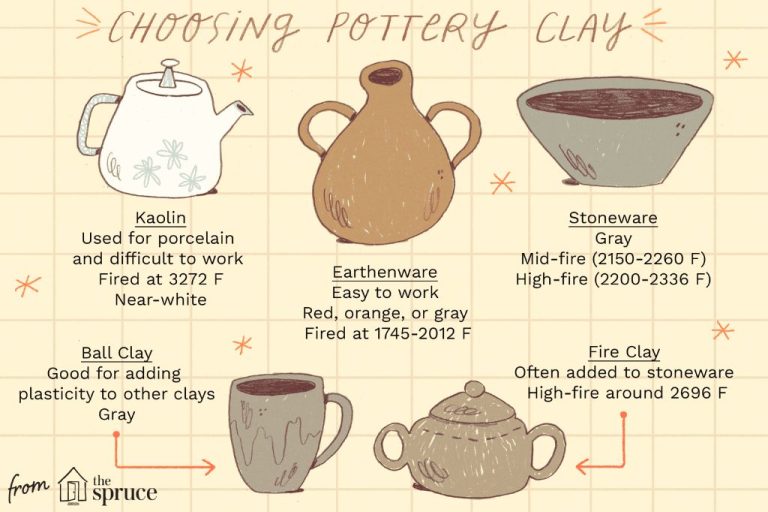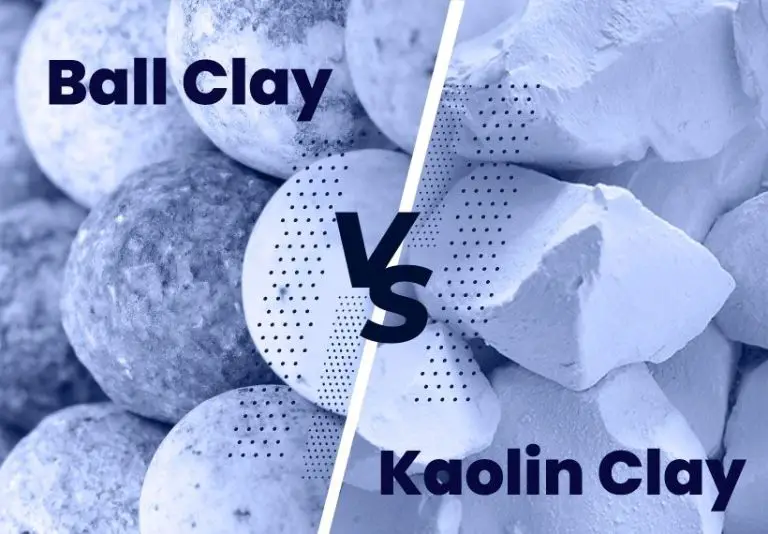What Type Of Clay Brick Is Burnt?
Burnt clay bricks are a classic building material that have been used in construction for thousands of years. They are made from clay that is molded, dried, and fired at high temperatures in a kiln. This manufacturing process hardens the bricks and sets their final shape and size. Burnt clay bricks are known for their durability, fire resistance, and attractive appearance.
This article provides an in-depth look at burnt clay bricks. It covers how they are made, the different types of burnt clay bricks, their properties and performance characteristics, advantages and disadvantages of using burnt clay bricks, common applications where they are used, and trends affecting the future of burnt clay brick production and construction.
Manufacturing Process
The manufacturing process for clay bricks involves several steps, including clay preparation, molding, drying, and firing. Here is an overview of each step:
Clay Preparation
The clay used to make bricks is first dug up from clay pits. The clay is then transported to the manufacturing facility where it undergoes crushing, grinding, screening, and blending operations. This prepares the clay into the proper consistency and particle size for optimal extrusion.
Molding
The prepared clay mixture is molded into the desired brick shape and size using automated presses and molds. The most common methods are soft mud extrusion and stiff mud pressing. In extrusion, the clay mix is forced through a die to create a continuous column which is wire-cut into bricks. In pressing, clay is compacted into molds.
Drying
The molded bricks contain approximately 20% moisture initially. They are dried to remove most of this moisture prior to firing. Drying is done either in open areas or in dryers/kilns. It helps harden the bricks and prevent later cracking and warping.
Firing
The dried bricks are fired in a kiln at high temperatures ranging from 900-1200°C depending on the clay properties. Firing burns off any remaining moisture and organic compounds. It vitrifies and bonds the clay material, completing the transformation into a strong, durable ceramic brick.
Clay Composition
Clay bricks are made from clay, an abundant natural material. The specific types of clay used can vary, but commonly include:
- Kaolinite – This clay has low plasticity and shrinkage and fires to a light color. It produces smooth, strong bricks.
- Illite – An absorbent clay that readily bonds with other materials. It is plastic and shrinks considerably during drying and firing.
- Montmorillonite – Extremely plastic and shrinkable clay that produces dark red bricks. It has high bonding strength.
- Ball clay – Very sticky and plastic white clay that gives bricks good plasticity and strength when mixed with other clays.
The choice of clay affects properties like color, strength, shrinkage, and porosity. Clays are often blended to achieve the ideal characteristics required for quality bricks. The clay composition directly impacts the firing process and the classifications of the finished bricks.
Firing Process
The firing process is a critical step in producing durable, high-quality bricks. During firing, the bricks are placed inside a kiln and heated to high temperatures over an extended period of time.
There are several types of kilns used to fire bricks:
- Clamp kilns – A temporary kiln built on-site with the bricks stacked inside. Heat is applied from firing the fuel underneath.
- Scove kilns – A permanent kiln with a boiling chamber. Heat flows from the chamber through flues in the brick stacking.
- Hoffmann kilns – A continuous kiln allowing simultaneous loading, firing, cooling, and unloading of bricks from different chambers.
- Tunnel kilns – A long, narrow kiln where bricks move slowly on railcars through various temperature zones.
Clay bricks are typically fired at temperatures ranging from 980°C to 1200°C for several hours to days depending on the kiln type. Higher temperatures and longer duration result in denser, stronger bricks.
Firing burns off any remaining organic compounds in the clay and causes sintering which fuses the clay particles together. This process creates the hard, durable properties desired in bricks.
Brick Classifications
Bricks can be classified into several types based on their manufacturing process, properties, shape and size. The most common classifications are:
Engineering Bricks
Engineering bricks are dense and strong bricks made from selected clays, fired at very high temperatures of around 1250°C. They have low porosity, high compressive strength and low water absorption. Engineering bricks are primarily used in heavy engineering works like bridge piers, foundations, dams, docks etc.
Facing Bricks
Facing bricks, also known as façade bricks, are used on exterior walls to provide an aesthetic appearance. They are made from highly refined selected clays and fired at high temperatures for an even texture and color. Facing bricks are available in different shapes, colors, textures and sizes.
Common Bricks
Common bricks are the most widely used type of bricks in brick masonry construction. They are inexpensive and less strong compared to engineering bricks. Common bricks are made from widely available clays and fired at lower temperatures around 950°C. They have moderate porosity and water absorption.
Properties
Clay bricks have some key properties that make them a popular building material, including:
Appearance
Clay bricks come in a wide range of colors, depending on the type of clay and manufacturing process used. Commonly seen colors include red, brown, yellow, and gray. The surface texture can range from smooth to a rougher, grainy texture. Color and texture allow clay bricks to add visual interest and aesthetic appeal to structures.
Strength
Properly fired clay bricks are very durable, with compressive strengths ranging from 1,500 psi to over 10,000 psi. Higher firing temperatures result in denser bricks with higher strength. Brick strength means structures made from brick tend to be long-lasting.
Porosity
The amount of porosity in a clay brick impacts properties like density, strength, and water absorption. Porosity is controlled during manufacturing. Higher porosity bricks absorb more water but provide better insulation. Lower porosity bricks are more water resistant and stronger.
Advantages
Clay bricks offer some key advantages that make them a popular building material.
Durability
Clay bricks are extremely durable. They can last for centuries and do not degrade or decompose over time. Their durability comes from the firing process, which hardens and strengthens the clay. Well-made bricks are resistant to damage from weather, insects, erosion, and other elements.
Fire Resistance
Clay bricks are naturally fire resistant and can withstand high temperatures. During a fire, the outer layer of the bricks may crack and spall off, but the inner core will remain intact and prevent fire spread. This fire resistance makes clay bricks ideal for fireplaces and chimneys.
Availability
Clay suitable for brickmaking is abundant and widespread geographically. Unlike some other building materials, the raw materials for clay bricks do not need to be imported or transported long distances. Bricks can be manufactured locally in most areas, making them readily available and affordable.
Disadvantages
While clay bricks have been used in construction for thousands of years, they do come with some drawbacks that must be considered when choosing building materials. Two of the main disadvantages of clay bricks are:
Heavy Weight
Clay bricks are much heavier than other common building materials like wood, concrete, or steel. The average clay brick weighs around 5 pounds, so walls made from brick can impose major loads on buildings. This requires strong, deep foundations. It also means construction with bricks is slower and more labor-intensive, since the heavy material is difficult to transport and stack.
Brittleness
Fired clay is a brittle material that can crack or chip easily under pressure. Although modern manufacturing creates durable bricks, they remain susceptible to breakage during transport and installation. Cracked or broken bricks cannot be used and must be discarded. Additionally, brick walls can deteriorate and weaken over time as the bricks are exposed to weather or seismic activity.
Applications of Clay Bricks
Clay bricks have been used in construction for thousands of years. Thanks to their durability, aesthetics, and availability, fired clay bricks continue to be a popular building material for the following applications:
Buildings
Clay bricks are commonly used for building walls in residential, commercial, and industrial construction. The modular size of bricks allows for versatile wall designs. Brick walls are strong, fire resistant, and attractive. From modest cottages to grand civic structures, clay brick is a tried and true building block.
Pavements
Bricks can be laid in patterns to create decorative and durable pavements for pathways, patios, driveways, and roads. Their hardness stands up well to foot traffic and vehicles. Brick pavements have an antique, Old World look that enhances the aesthetics of landscapes and architectural spaces.
Architecture
Beyond walls and pavements, fired clay bricks enable many architectural design elements. Arches, columns, stairs, facades, and ornamental brickwork expand the creative possibilities. The modular nature and workability of brick combined with its strength, longevity and aesthetics make it a favored medium for architects and builders.
Future Trends
The brick manufacturing industry is evolving to incorporate new technologies and address sustainability concerns. Some key trends shaping the future of clay bricks include:
New drying technologies: New microwave and radio frequency drying methods are being adopted that are more energy-efficient than traditional kiln drying. These technologies can cut drying time in half.
Lower carbon footprint: Manufacturers are using renewable fuels like biomass in place of coal to fire bricks. This reduces greenhouse gas emissions associated with production. More efficient kilns and the use of recycled content in bricks also decreases their carbon footprint.
Automation: Increased automation and robotics are being integrated into brick factories to improve efficiency, quality control and working conditions. Technologies like automated setting and stacking systems are becoming more prevalent.
Sustainable materials: More emphasis is being placed on recyclability and using sustainable or waste materials for brick production. This includes incorporating industrial byproducts like fly ash. Resource efficiency is a growing priority.
Overall, the industry is focused on making brick manufacturing more environmentally friendly, automated and technically advanced. This will shape the future of clay brick production and applications.




